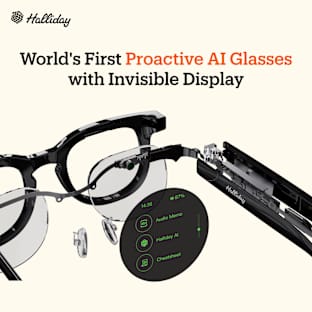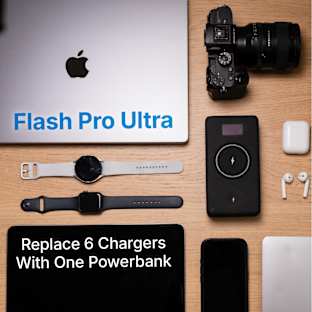Now, the next model PlatoGame is available!
![]()
![]()
![]()
![]()
![]()
The PlatoWork headset
PlatoWork is the first of its kind: A cloud based, plug and play, neurostimulation headset supported by an app.
![]()
Your brain at its best – when you need it
PlatoWork can get you into work mode on days, where your brain just wont collaborate. Or increase your state of flow, when you're already on track with a task. Whether you need to study for an exam, block out distractions to meet a deadline, or come up with creative solutions to a problem, PlatoWork can help you get there. In the app, you can choose between four different modes, to accelerate different types of cognitive functions:
![]()
New product – known technology
The headset uses a safe and well-known technology called tDCS - transcranial direct current stimulation, which can increase cognitive functions by sending a weak current through specific regions of the brain. tDCS has been around for more than 20 years, but has been reserved for elite usage in closed settings such as army- and pilot training, and research labs at top universities.
Well over 4000 studies have already demonstrated that tDCS is a safe and effective way to optimize brain activity. Unlike chemical performance enhancers, neurostimulation with tDCS is not associated with any serious adverse effects. Links to further readings are provided at the bottom of the page.
![]() Stimulating your brain with tDCS will only work if your brain works with it. tDCS primes your neurons to perform faster, but it only works, if you yourself activate them.
Stimulating your brain with tDCS will only work if your brain works with it. tDCS primes your neurons to perform faster, but it only works, if you yourself activate them.
Reviews from real users
We’ve already produced, sold and shipped two earlier versions of the headset, now used by hundreds of people around the world. Their continuous feedback has been vital in helping shape the final product.
![]()
![]()
How to use PlatoWork
Put on the PlatoWork headset, use the app to select which mode you need, and for the next 30 minutes the headset will stimulate the relevant regions of your brain, while you continue working.
![]()
![]()
The PlatoWork app
Use the PlatoWork app (iOS/Android) to manage and track your sessions
![]()
Please note that PlatoWork app only runs on:
Minimum version Android => Lollipop 5.0
Minimum version IOS => IOS 10.0
Development
After two years of development, the final concept for the PlatoWork headset was ready at the start of 2017, after 100’s of different prototypes, endless 3D prints, and testing in lab and with users. The current design has been shaped over the last two years, based on hand assembly and shipping smaller batches of first generation headsets to users around the world.
PlatoWork is the result of thousands of sessions and hundreds of individual users. Their feedback has been a vital contribution in helping shape the final version of the headset and app, now available to you.
Production/shipping stage
The product is ready and is currently delivering in more than 70 countries worldwide! To ensure the quality of the product, we've chosen to produce in small batches, which is why only a limited number of products are available.
*Please note that local taxes and VAT will be applied upon import to countries outside of the US and the EU.
PlatoWork unboxing – made independently by one of our backers
![]()
PlatoWork headsets packed and ready for shipping
Our story & team
This journey started back in 2015, when the founders, Morten and Balder, decided that it was time tDCS technology became widely available. Morten, a neurobiologist, and Balder, a product designer, have been friends and collaborators since they wrote their PhD’s together at Copenhagen Business School 10 years ago.
Today, the core team of PlatoScience includes a small but dedicated group of neuroscientists, engineers, developers, communicators and designers based in Copenhagen, Denmark. We are devoted to making neurostimulation easy and accessible to anyone, who wants to improve the way their brain works.
Our vision
To the ancient Greeks, a rich life was a life engaged in thinking: To be the best version of yourself was to be curious and strive to improve your mind. We named our company after one of the greatest thinkers of all time, because these ideals need to be made relevant again. PlatoWork is not just about enhancing cognitive performance. It’s about the gratifying experience of using your brain, the way it was intended. When we are fully absorbed in a task we are not just more efficient; we are in a state of flow – we are happy. Neurostimulation is a way to gradually take charge of your brain. It’s a tool for monotasking and a celebration of the things, we as humans are capable of when we insist, that our ability to think is what makes us who we are.
Founders
Balder Onarheim is a serial entrepreneur and former associate professor in creativity at the Technical University of Denmark, with a PhD in the crossfield of creativity and engineering.
Morten Friis-Olivarius is a neuroscientist and serial entrepreneur in applied neuroscience. He is considered one of the leading experts on neurocreativity and holds a PhD in neurobiology and creativity from Hvidovre University Hospital and Copenhagen Business School.
Project risks and challenges
We’ve done everything we could to ensure that the production runs smoothly. That's why we've decided to produce in small batches to avoid any problems with high volume productions.
Still the biggest risk-delimitation we’ve made, is to test PlatoWork among real users and continue to redesign the product based on their feedback.
Who can use PlatoWork?
Anyone who is neurologically healthy, have normal skin and is more than 18 years of age can use the headset.
You cannot use the headset if:
- You have a scalp or skin condition (e.g. psoriasis or eczema) as tDCS may aggravate the condition.
- If you have a neurological disease or condition. tDCS responsiveness and current flow may differ due to the condition.
- Have any metallic implants in your head, including intracranial electrodes, surgical clips, shrapnel or a pacemaker - but not including metal in the teeth and/or jaw. The reason is that metallic implants may change the current flow.
- If you have any doubts, please consult your doctor before ordering.
Product details and specifications
![]()
Recommended further reading
We understand how important it is for you to be able to read more about neurostimulation and academic research related to PlatoWork. Below is a research overview of the most important studies with links to the original articles.
Overview of the neurostimulation technique
The review Physiology of Transcranial Direct Current Stimulation from 2018 explains the biological and physiological mechanisms behind the effects of neurostimulation.
Neurostimulation and learning
Simonsmeier et al. investigated the effects of neurostimulation on learning in comparison to performance tasks in the meta-analysis Electrical brain stimulation (tES) improves learning more than performance from 2018. Here they show that neurostimulation during a learning phase has a much stronger effect than both before or during a performance task. They concluded that the effects of neurostimulation is stronger when used to acquire new skills. In fact, studies have shown that a new skill can be acquired up to double the normal rate if neurostimulation is used simultaneously.
Boosting creativity with neurostimulation
Compared to other sciences less is known about the nature of the neural mechanisms underlying Creativity. To 'create' as such is a multifaceted phenomenon and cannot be ascribed to one single mechanism. Instead it is better viewed as an interplay of many mechanisms. Lucchiari, Sala and Vanutelli (2018) have made a critical review Promoting Creativity Through Transcranial Direct Current Stimulation (tDCS) on the effectiveness of the different attempts to use neurostimulation to increase neuronal excitability in brain areas related to creativity. These studies were compiled under the following headlines: The promotion of self-focused attention; the disruption of inhibiting mechanisms; the enhancement of creative thinking; the promotion of artistic enactment.
![]()
Credits
Thanks to all our awesome helpers who’ve contributed to the production of this campaign!
Michael Rosenfeldt - filming and editing
Peter Klint - deck and still photography
Chris Milne - deck photography
Espen Guldbrandsen - deck photography
Espen Hanstad Sørby - deck photography
Daniel Rosenfeldt - speak, and music in testimonial videos
Henning Vincent - sound mastering
Jesper Vind, Fenris Motorcycles, Republikken & The Rabbit Hole - locations
Orestes - filming assistance
Tine's parents - babysitting






























 Stimulating your brain with tDCS will only work if your brain works with it. tDCS primes your neurons to perform faster, but it only works, if you yourself activate them.
Stimulating your brain with tDCS will only work if your brain works with it. tDCS primes your neurons to perform faster, but it only works, if you yourself activate them.





























